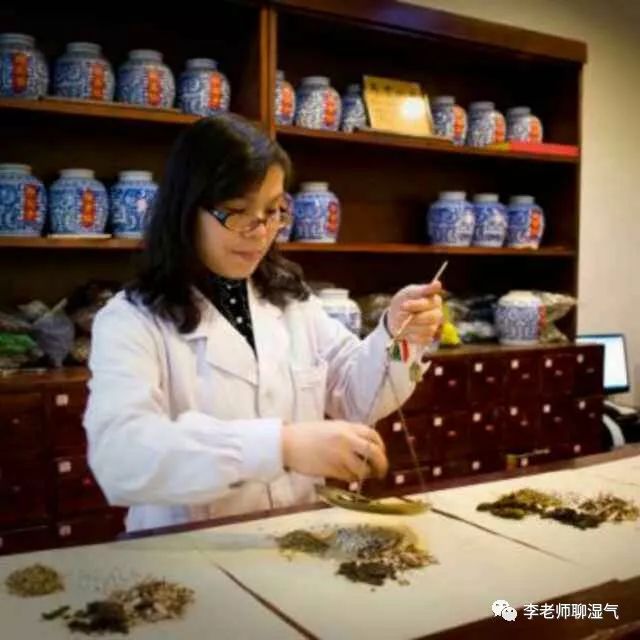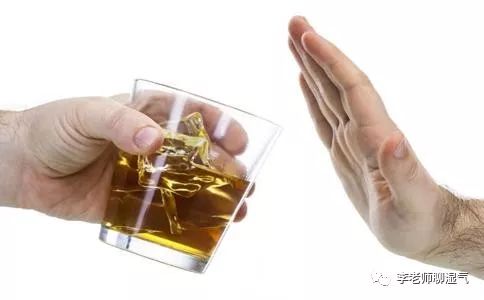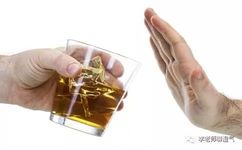
In this great era, I have the opportunity to connect with many patients on WeChat, helping them overcome their health issues, which is the greatest comfort for me as a doctor.
—— Teacher Li

What is Damp-Heat Constitution? This is a highly clicked question online. We know that there are nine major constitutions in Traditional Chinese Medicine (TCM), and Damp-Heat Constitution is one of them. So, what exactly is Damp-Heat Constitution? Let’s explore this in detail. In TCM, we often hear about Damp-Heat. But what does Damp-Heat really mean? What are the symptoms of Damp-Heat? How can we manage Damp-Heat Constitution? What should we eat to alleviate Damp-Heat? I will introduce these topics one by one, so don’t miss out if you want to learn more about Damp-Heat!
1Damp-Heat Constitution Symptoms and Management
Damp-Heat is a term in TCM, referring to pathogenic factors, specifically two of the six excesses: Wind, Cold, Heat, Dampness, Dryness, and Fire (Heat). It is also a TCM syndrome, such as Damp-Heat Syndrome, which indicates that Damp-Heat is accumulated in the body, obstructing the flow of the organs and meridians, leading to pathological changes characterized by systemic Damp-Heat symptoms.
Damp refers to what is commonly known as moisture, which can be classified into external and internal Dampness. External Dampness is an external pathogen, known as Damp Evil, often caused by humid weather, exposure to rain, or living in damp environments, leading to the invasion of external moisture into the body. Its pathogenic characteristics include heaviness, stickiness, and a tendency to descend. Internal Dampness is a pathological product related to dysfunction of the organs.
Heat is also a type of pathogenic Qi, characterized by its inflammatory and ascending nature, known as Fire Heat Evil. Heat can also arise from dysfunction of the organs, referred to as internal Heat. When Fire Heat Evil invades the body or internal Heat arises from organ dysfunction, it can lead to Heat Syndrome, which is characterized by the invasion of external pathogens or hyperactivity of bodily functions, resulting in Yang excess and Yin deficiency. Clinical manifestations of Heat Syndrome include fever, thirst with a preference for cold drinks, flushed face and red eyes, dark and scanty urination, dry and hard stools, red tongue with yellow dry coating, and rapid pulse.
Symptoms of Damp-Heat
The climate in southern regions can sometimes feel like being in a large steamer, making it a high-risk area for Damp-Heat Constitution. However, climate is not the only factor; dietary habits and lifestyle choices are key contributors to Damp-Heat. Therefore, even in the dry northern climate, one can still suffer from Damp-Heat, so vigilance is necessary. What are the symptoms of Damp-Heat?
1. Why does Damp-Heat cause acne?
Generally, people associate acne with adolescence, but many continue to experience it into their 30s and beyond. This is not merely a sign of youth but a manifestation of a constitution where internal Damp-Heat is at play. In TCM, acne is referred to as “Zits” (痤疮, cuó chuāng), fundamentally caused by Damp-Heat leading to phlegm and blood stasis, resulting in the formation of acne. If not managed promptly, it can become pus-filled, leading to cystic acne. The reason those with Damp-Heat Constitution are prone to these issues is that the two pathogenic evils of Dampness and Heat are too abundant in the body, signaling the body’s innate response, hence the appearance of acne or pus. This is akin to how fruit rots easily in the humid summer, while nuts, like walnuts, can last long if kept dry. The internal cause is Damp-Heat, while the external manifestation is acne; thus, merely applying topical medications or skincare products cannot fundamentally resolve the acne issue.
2. Why does Damp-Heat cause “bitter mouth, dry mouth, and bad breath” and “dark, scanty urination, sticky stools”?
Some individuals experience bitter mouth, dry mouth, bad breath, and are prone to bloating and armpit odor due to internal Damp-Heat. Those with Damp-Heat Constitution often have dark and scanty urination (deep-colored), and sticky stools that are difficult to flush away. In TCM terms, Dampness belongs to Yin, while Heat belongs to Yang; their combination is inherently contradictory and leads to conflict. The body of a person with Damp-Heat is a battlefield between Dampness and Heat, where whichever side is stronger results in significant depletion of vital energy. Since Dampness and Heat primarily harm the spleen and stomach, symptoms such as poor appetite, bad breath, and dry mouth are common. Dysfunction of the spleen’s transformation and transportation inevitably affects excretory functions, leading to symptoms like yellow and scanty urination and dry or sticky stools.
3. Why does Damp-Heat cause “scrotal dampness”?
Modern urban dwellers often have irregular lifestyles, enjoy staying up late, drinking, and smoking, which can exacerbate Damp-Heat Constitution. If lifestyle habits are not changed, the consequences can be severe, leading to difficult-to-treat conditions such as cholecystitis, prostatitis, and in women, vaginitis, while men may experience “scrotal dampness,” which is very difficult to heal. Additionally, factors such as prolonged mental stress, living in damp environments, and frequent alcohol consumption contribute, but the root cause remains Damp-Heat Constitution.
4. Why does Damp-Heat cause “liver and gallbladder diseases”?
Patients with cholecystitis often experience chest tightness, abdominal bloating, bitter mouth, nausea, and other symptoms. In TCM terms, this is due to emotional stagnation, disharmony of liver Qi, and dysfunction of the spleen, compounded by the strong presence of Damp-Heat Evil. Simply put, it is because the levels of Dampness and Heat in the body exceed normal levels, invading the liver and gallbladder. The liver and gallbladder are responsible for the body’s drainage; if surrounded by Damp and Heat evils, it leads to obstruction of drainage and constipation; if this continues, it can result in dark and scanty urination, prostatitis, and gynecological diseases.

5. Why does drinking alcohol cause Damp-Heat?
Alcohol is something many men consume frequently, whether at social gatherings or work banquets. Alcohol, being a liquid, naturally contains moisture, but it is fermented from grains, making it a high-calorie, hot substance. Therefore, alcohol itself contains a mix of Dampness and Heat; when consumed in large quantities, it naturally brings Dampness and Heat into the body, exceeding the body’s threshold and ultimately leading to the development of Damp-Heat Constitution.
*Self-Diagnosis of Damp-Heat Constitution
Understanding the characteristics of Damp-Heat Constitution is essential for accurate diagnosis. So, how do you know if you have Damp-Heat Constitution? Let’s explore the characteristics of this constitution.
Damp-Heat Constitution is primarily characterized by the internal accumulation of Damp-Heat. It has the following 15 characteristics. If you have experienced more than 9 of the following symptoms in the past year, you likely have Damp-Heat Constitution.
1. Does your face, nose, or forehead often appear shiny, feeling oily within 30 minutes after washing?
2. Does your face often feel unclean or dull, such as having a yellowish or dark, oily complexion?
3. Do your teeth lack luster, appear yellow, and do your gums appear deep red or dark red?
4. Is your skin prone to acne, mostly pustular, or do you frequently experience purulent skin infections?
5. Do your eyes often have red veins, or do your eyelids feel fatigued, sore, or do you have blurred vision?
6. Do you often feel bitter in your mouth, have bad breath, or experience unusual tastes, such as sourness?
7. Do you often feel heavy, fatigued, and drowsy, even with sufficient sleep?
8. Do you often experience difficulty breathing or a feeling of suffocation, as if a weight is pressing on your chest?
Prevention of Damp-Heat Constitution
Generally, Damp-Heat refers to the deep infiltration of Damp-Heat into the organs, especially the spleen and stomach, which can manifest as fullness and discomfort in the abdomen, nausea, poor appetite, loose stools, dark and scanty urination, and a slippery and rapid pulse. Other manifestations of liver and gallbladder Damp-Heat include distension and pain in the liver area, bitter mouth, poor appetite, or jaundice, alternating between fever and chills, and a wiry and rapid pulse. Bladder Damp-Heat may not alleviate with sweating, presenting as frequent urination, urgency, and painful, cloudy urine. Large intestine Damp-Heat may present as abdominal pain and diarrhea, even with urgent and heavy stools, burning sensation in the anus, and thirst.
In daily life, people can prevent Damp-Heat Constitution through the following six methods:
1. Emotional Regulation
People with Damp-Heat Constitution tend to have emotions similar to those with Yin deficiency. They are often irritable, extroverted, and active, frequently feeling anxious and angry. It is important to manage emotions and maintain a stable mindset.
2. Dietary Management
Consume more foods that clear Heat and drain Dampness, such as Coix seed (薏苡仁, yì yǐ rén), lotus seeds (莲子, lián zǐ), Poria (茯苓, fú líng), seaweed (紫菜, zǐ cài), red beans (红小豆, hóng xiǎo dòu), mung beans (绿豆, lǜ dòu), lentils (扁豆, biǎn dòu), duck meat (鸭肉, yā ròu), crucian carp (鲫鱼, jì yú), winter melon (冬瓜, dōng guā), gourd (葫芦, hú lu), bitter melon (苦瓜, kǔ guā), cucumber (黄瓜, huáng guā), celery (芹菜, qín cài), cabbage (白菜, bái cài), water spinach (空心菜, kōng xīn cài), and lotus root (莲藕, lián ǒu). Avoid spicy, hot, and overly nourishing foods and drinks.
3. Lifestyle Adjustment
Since Damp-Heat Constitution is primarily characterized by internal accumulation of Damp-Heat, it is essential to develop good lifestyle habits. Avoid staying up late or excessive fatigue. Ensure smooth bowel movements to prevent Damp-Heat accumulation. Pay attention to personal hygiene to prevent skin diseases. Maintain a well-ventilated and comfortable living environment. Correct bad habits, such as quitting smoking and limiting alcohol consumption.
4. Exercise
Damp-Heat Constitution is characterized by internal accumulation of Dampness and excess Yang. Engaging in high-intensity and high-volume exercises, such as middle-distance running, swimming, hiking, various ball sports, and martial arts, can help dissipate excess heat and expel excess moisture, achieving the goal of clearing Heat and draining Dampness. Combining strength training with middle-distance running is beneficial.
5. Herbal Health
From a clinical perspective, Damp-Heat Constitution can be categorized into three types: Dampness predominant, Heat predominant, and equal Damp-Heat. For Dampness predominant, the focus is on resolving Dampness, commonly using herbs like Talcum (滑石, huá shí), Licorice (生甘草, shēng gān cǎo), Apricot kernel (杏仁, xìng rén), Coix seed (薏苡仁, yì yǐ rén), White cardamom (白寇仁, bái kǒu rén), and Reed rhizome (茅根, máo gēn). For Heat predominant, the focus is on clearing Heat, with options like Honeysuckle (金银花, jīn yín huā), Dandelion (蒲公英, pú gōng yīng), Wild chrysanthemum (野菊花, yě jú huā), Purple gentian (紫地丁, zǐ dì dīng), Coptis (黄连, huáng lián), and Kudzu (葛根, gé gēn).
6. Meridian Therapy
Individuals with Damp-Heat Constitution can occasionally undergo cupping or gua sha to improve symptoms like yellow urination and irritability. Irritability can lead to insomnia and muscle soreness throughout the body, especially in the neck and shoulders. The best methods to improve Damp-Heat Constitution are gua sha and cupping; after gua sha, cupping can provide immense relief, akin to shedding a heavy burden. In such cases, using these methods to improve constitution may even eliminate the need for medication. Gua sha is also effective for Damp-Heat.
*Foods to Avoid for Damp-Heat Constitution
Avoid: fresh ginger (新姜, xīn jiāng), garlic (小蒜, xiǎo suàn), knotweed (蓼子, liǎo zǐ), wild chicken (野鸡肉, yě jī ròu), dog meat (狗肉, gǒu ròu), frost-damaged vegetables (霜下瓜, shuāng xià guā), sunflower greens (葵菜, kuí cài), pepper (胡椒, hú jiāo), Sichuan pepper (花椒, huā jiāo), leeks (韭菜, jiǔ cài), deer meat (獐肉, zhāng ròu), pig kidneys (猪肾, zhū shèn), sheep kidneys (羊肾, yáng shèn), and pork (猪肉, zhū ròu). According to the “Qianjin Fang,” avoid eating pepper (胡椒, hú jiāo) in October as it harms the blood vessels. Avoid frost-damaged vegetables, which can dull the complexion. Avoid leeks, which can cause excessive salivation. Avoid deer meat, which can provoke anger. Avoid pig and sheep kidneys in October, as the kidneys are at their peak and should not be supplemented. According to “Baiyun Ji,” avoid pork in October, as it can provoke residual Qi. Avoid fresh ginger, which can lead to chronic diseases. Avoid garlic, which harms the spirit and shortens life. Avoid knotweed. Do not consume pig liver with sweet foods, as it can lead to coughs that persist for years. Avoid pheasant (野鸡, yě jī) meat, which harms the spirit. Avoid dog meat, which harms the spirit. Avoid frost-damaged vegetables, which can cause stomach issues. Avoid sunflower greens, which can lead to indigestion.
Understanding what to avoid for Damp-Heat Constitution is crucial for eliminating health risks and achieving a healthy and scientific approach to wellness.
Through the above content, I believe everyone has gained some understanding. Modern life is fast-paced and stressful, leading to various adverse constitutions. In daily life, pay attention to your body’s responses and adjust accordingly. If work and life pressures leave you with little time or energy to focus on diet and lifestyle, consider using some constitution-regulating products during your breaks at work.
In the future, I will write about the symptoms and management of other constitutions. Friends interested in learning more about TCM wellness knowledge, remember to follow the WeChat public account “Teacher Li Talks About Dampness.” If you have any questions, feel free to consult the teacher on WeChat.

Teacher Li Talks About Dampness
TCM Wellness Path
Long press the QR code to follow Teacher Li

